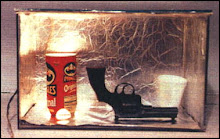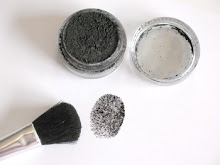For nonabsorbent and hard surfaces, such as glass or tiles, you use powder. When choosing a powder to use for developing fingerprints, you’ll get a better result if you use a color that contrasts with your surface. For example, when you’re trying to develop a fingerprint on a window, you use a dark powder. Charcoal or black carbon would work in this situation. Likewise, when developing a print on a dark surface you use a light powder such as baby powder. After applying the powder, very gently blow and brush off the powder. Then you just stick a piece of tape on the print and slowly take it off. There should be an imprint on the tape.
For porous and smooth surfaces, like paper or cardboard, you use certain chemicals. One method is using iodine crystals. The reason why iodine is used is because it sublimes, meaning it can go from solid to vapor without turning into liquid. You put the item with the fingerprint on it in a closed space with the iodine crystals. Then you heat the crystals until it vaporizes. The vapor will stick onto the outlines and ridges of the fingerprint. The print will disappear after a few moments so you can either take a picture of it or spray it with a 1% solution of starch in water, which will turn it blue and make it last much longer. Another chemical that can be used is silver nitrate. After applying the silver nitrate on an object, you put it under an ultraviolet light and a reddish-brown or black outline of the fingerprint should appear. Ninhydrin is another chemical that can be used. It is found in acetone and ethyl alcohol. You use a spray can and spray the suspect material and a print should appear after a few hours. The time can be shortened if you heat it since heating something will increase the rate of its reaction. The last chemical that can be used is super glue. Heating the super glue will make the cyanoacrylate ester found in it stick to the fingerprint.



